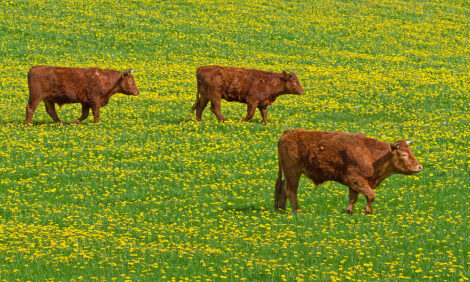



Getting a Better Handle on Methane Emissions from Livestock
US - Cattle, swine and poultry contribute a hefty portion to the average American's diet, but raising all this livestock comes at a cost to the environment: The industry produces a lot of methane, a potent greenhouse gas.Just how much gas the animals release, however, is the subject of debate. Now, one group reports in ACS' journal Environmental Science & Technology that a new approach could shed light on how accurate current data are.
According to the US Environmental Protection Agency, the livestock industry is the second-biggest methane emitter in the US. The gas comes from the microbial fermentation that occurs in the animals' stomachs, resulting in digestion-related (enteric) emissions, and from fermentation in their manure.
The total amount depends on the type of animal, what the animals eat and how their manure is stored. For example, cattle that mostly consume grain-based feed release significantly less enteric methane than cattle that graze on pasture.
But current estimates of total livestock methane emissions may rely on outdated emission factors and do not fully consider feed intake and differences in animal diets, or the facilities used to store manure.
These data gaps lead to large uncertainties in methane emission figures. To better understand livestock contributions to these emissions in the US, Alexander Hristov and colleagues sought to fill in the missing data gaps.
The team analyzed the feed intake data for cattle, as well as manure storage practices for cattle, pigs and poultry, at the county and state levels in the contiguous US. Their resulting estimates for methane emissions by location varied widely from numbers currently reported by inventories such as the European Emission Database for Global Atmospheric Research (EDGAR).
For example, the researchers found that the combined enteric and manure methane emissions from livestock in Texas and California were 36 per cent less and 100 per cent greater, respectively, than estimates by EDGAR.
Based on their data, the researchers say that results from studies that use inaccurate distribution inventories to determine emissions sources should be cautiously interpreted.
TheCattleSite News Desk


